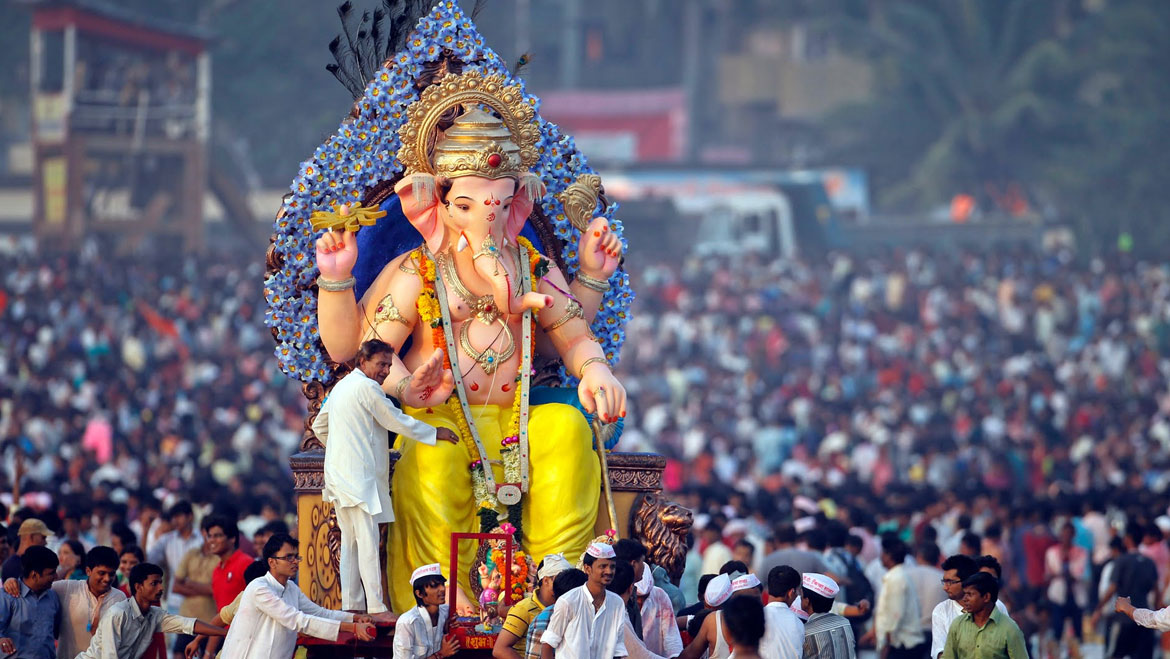Introduction
Alright, so yesterday was a very special day for us. It was Vinayaka Chathruti and that’s a famous celebrated festival in India where we take blessings from Lord Ganesh(one of the God’s) and sit as a family to pray together and listen to the famous story. The process is long but all-in-all, the festival has explosive energy to it. I love it!
Traditionally, the streets would be filled with high voltage humans and the atmosphere wouldn’t have a chance to take a breath. It’s full of energy. Though, unfortunately, this year, due to the circumstances, many people are gated to their houses and have to celebrate it on their own. Though, I must admit that I won’t forget the day because of the auspiciousness attached to it.
Prayer and Story
Firstly, we started off by getting ready and wearing traditional clothes(which is actually very comfortable). Then we made some adjustments to the already heavily decorated prayer room with even more decoration. And for the prayer itself, we prepared a few necessary items to carry out the procedure. The prayer is something that is heartily followed by most of the Indian population. It mainly involves 2 stages which are:
- Praying Lord Ganesh
- Story about Lord Ganesh
So, we commenced. Much later than usual. And I went into my meditation pretty soon in order to pay attention to the complicated utterances the Sanskrit prayers are composed of. This is not to exaggerate but seriously speaking, the Sanskrit language is one of the oldest and most advanced languages with highly complicated terminology and tremendous meaning. It’s a beautiful language and some of my favourite songs are in Sanskrit.
What surprises me is the care and significance of each and every word the author chooses. It’s astonishing to see their divine pourings of the Sanskrit language even today in the form of an updated book…
Of course, if you listen to one of the prayers, you’ll instantly pick up on the complexity, though, for the sake of explanation, the complexity I’m referring to is the various combinations of letters that create words which are strenuous for pronunciation. For me, I’ve been able to create the habit of an Indian form of meditation which uses some of the Sanskrit pronunciations and thankfully that practise has guided me in some pronunciation. Despite that, I still brawl through the language’s tangled terminology.
Rituals and their significance
Throughout the prayer, there are so many rituals that are to be followed. This is an area that I find particularly interesting. Now, if you’ve seen an Indian wedding(there are many types but we won’t get into that now), you know that it’s not a simple process. It involves many rituals and practises that are followed as a tradition. Such practices apply in practically every prayer. This one is no exception.
There are subtle formalities such as placing a plate of fruits ahead of the Ganesh idol or taking a sip of water using an Udrani(a copper spoon of sorts) or rotating around a spot 3 times. These are just a few examples that take place throughout the prayer process but they all have significance. And that’s my strong belief. From my standpoint, these rituals must have some significance and meaning attached to them if they’re so primordial. Hence, I tend to follow these subtle rituals for the sake of obeying the tradition as well as benefiting from the reserve.
Food
One of the invigorating aspects of the festival is the food. The lord worshipped on this day is rather prominent for his love for food. And so, families make lots of appetising sweets, snacks and succulent meals. This gets me fired up man! Even now I feel like having that food again.
Of course in general, festivals mean that special food is prepared for that day and I literally wake up to such days with a fresh sense of excitement. As I said, the food gets me fired up!
I find it fascinating how there are so many types of food items and meals that are created on this auspicious day and it reminds me of the variety and intricacy Nature has. In this way, the festival has created a fundamental connection to Nature and reminded me of the importance and preciousness of food.
Conclusion
Ultimately, despite all of the connections to some super force or Godly beliefs, I appreciate the significance of each of the rituals and the festival as a whole. And it’s a time of the year when everyone in the nation unites to celebrate and spread the energy. Through that lens, I find festivals fascinating and prayers alleviating. As I mentioned in the Mahabharat blog, with something so ancient, there will be some hard to believe aspects but they’re actually just misconceptions. The story explained in the books that we get now may be close adaptations of the original, however, they, unfortunately, lack the logical explanation to the intricate happenings and we have to simply accept that the events would have happened which may have happened in a different way to what is fictionally being depicted(for the sake of reaching a larger audience).
And that’s another thought that strikes my mind. Whilst I have respect for those who are translating these scriptures into newer adaptations, I also have some resentment for a few. Those who add the element of fiction by neglecting the logical explanation create a negative impression for me. I feel that something so valuable deserves to be carefully translated with a meaningful iterative approach. But I guess in such a high voltage world, it’s hard to keep track of such minute details and the freedom of translation of old scriptures belongs to everyone! So those who are captivated to do it will have their own version. And with so many versions arises complexity, confusion, variation and meaninglessness. Also, the scripture loses its value if it’s written by any random person for the sake of idea profit. These ideas trouble me as I expect the original scriptures to be a treasure which has unfortunately strayed its path and lost its original meaning.



Leave a Reply